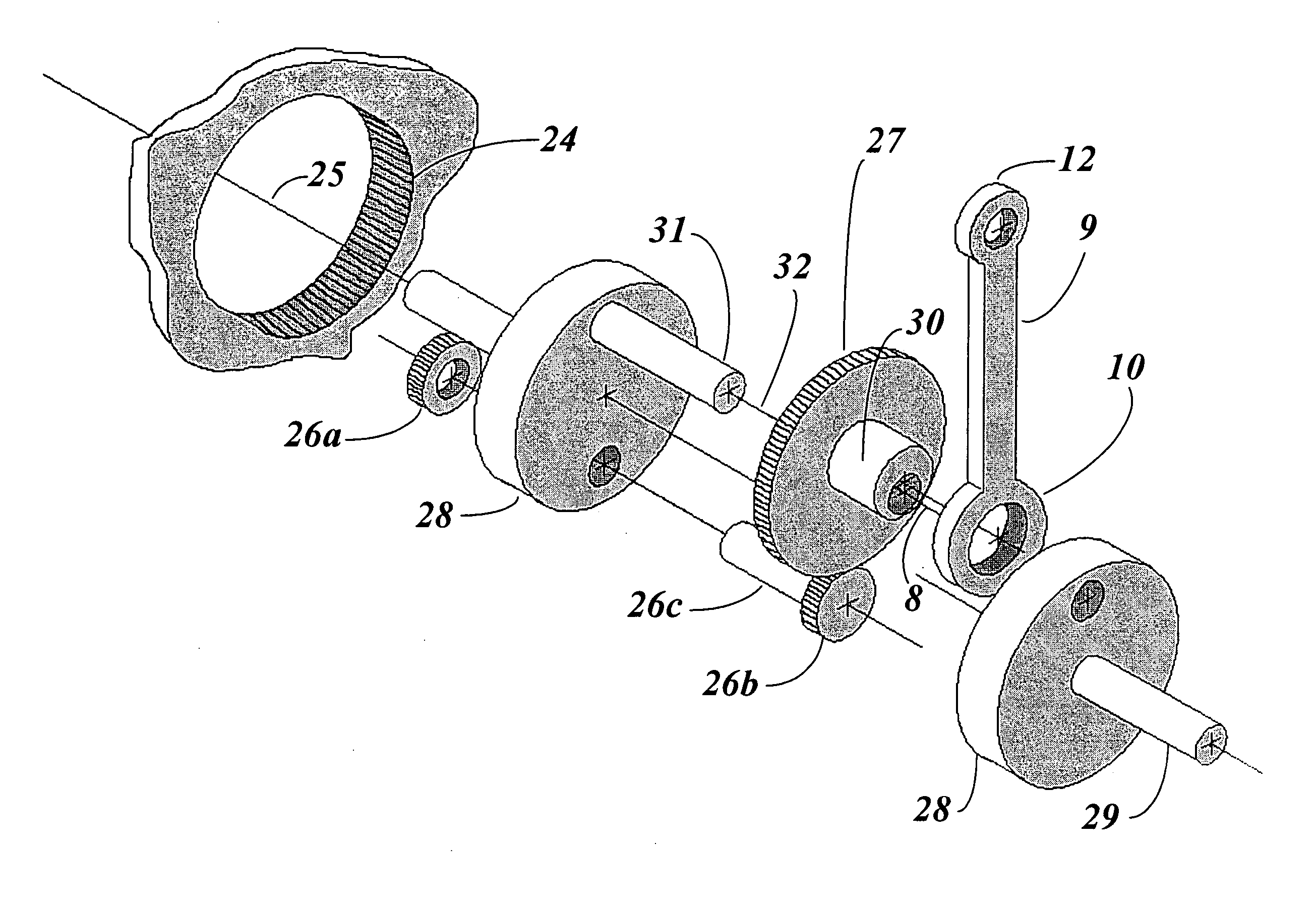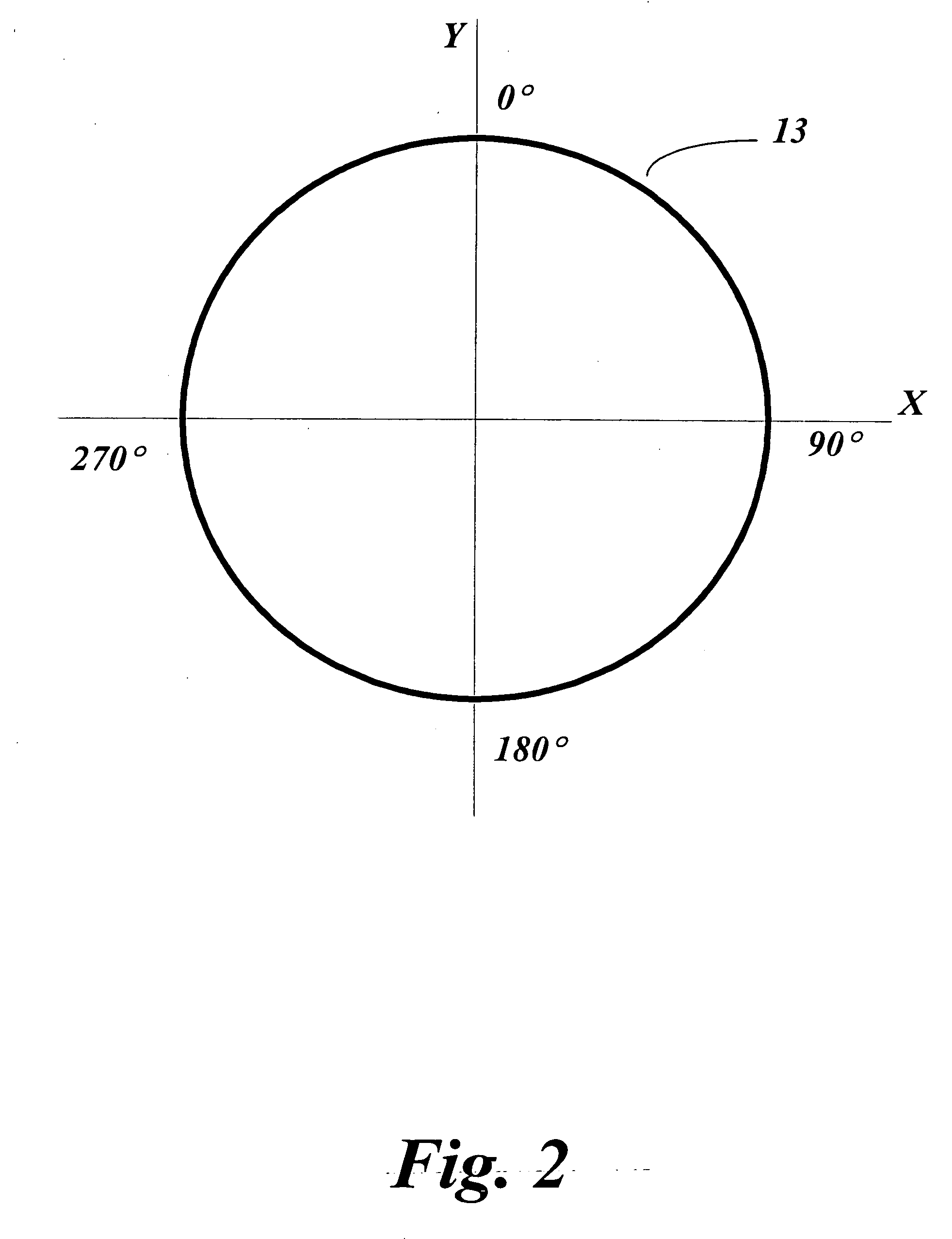Epitrochoidal crankshaft mechanism and method
a crankshaft and epitrochoidal technology, applied in the direction of cranks, gearing, machines/engines, etc., can solve the problems of inability to achieve advantages, force the lowering of the cr to a point where, and the attempt to enhance the internal combustion engine in this configuration has been limited, so as to achieve greater output, increase the work of the piston, and enhance the force and distance of the piston travel
- Summary
- Abstract
- Description
- Claims
- Application Information
AI Technical Summary
Benefits of technology
Problems solved by technology
Method used
Image
Examples
Embodiment Construction
[0065] One embodiment of the inventive Epitrochoidal crankshaft assembly, as depicted in the exploded view shown in FIG. 1, is a simplified planetary gear system 1 utilizing a stationary sun gear 2 and a revolving planet gear 3 of equal pitch diameter. The two gears are kept in constant mesh by a crankshaft 4 that may also serve as a flywheel. The sun gear 2 is fixedly attached to the engine's crankcase, which is not shown, with its axis-5 on the same rotational axis as that of the crankshaft 4. The planet gear 3 is centered on the crankpin 6 by either a bushing or a bearing. These two gears each have a pitch diameter equal to the distance between the axis 5 of the crankshaft 4 and the axis of the crankpin 6, or one-half the stroke of the crankshaft 4. Since the gears are constantly in mesh, the distance between the centers of both gears will never vary; therefore, if the path of the axis 11 of planet gear 3 was plotted as it revolved around the stationary sun gear 2, the resultant ...
PUM
 Login to View More
Login to View More Abstract
Description
Claims
Application Information
 Login to View More
Login to View More - R&D
- Intellectual Property
- Life Sciences
- Materials
- Tech Scout
- Unparalleled Data Quality
- Higher Quality Content
- 60% Fewer Hallucinations
Browse by: Latest US Patents, China's latest patents, Technical Efficacy Thesaurus, Application Domain, Technology Topic, Popular Technical Reports.
© 2025 PatSnap. All rights reserved.Legal|Privacy policy|Modern Slavery Act Transparency Statement|Sitemap|About US| Contact US: help@patsnap.com



